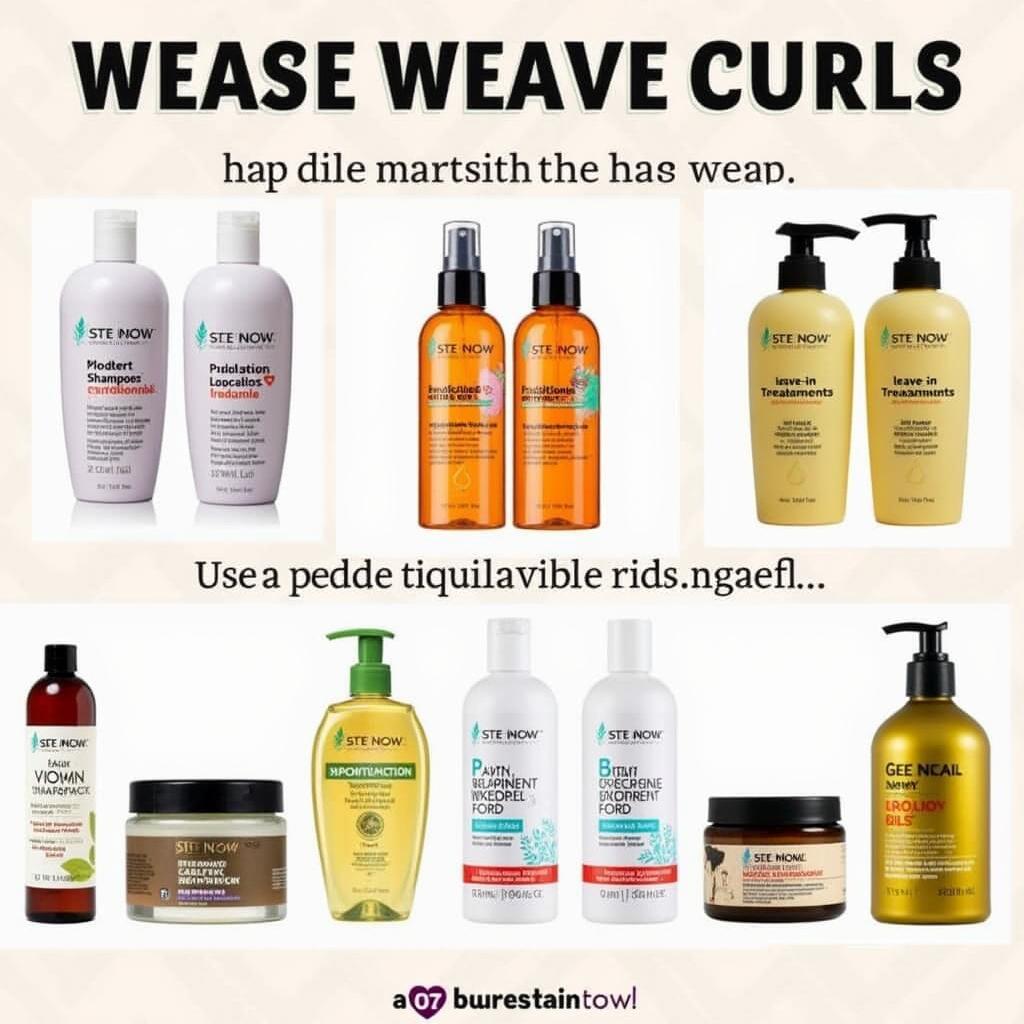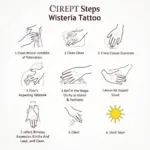
Decoding Different Weave Curl Patterns
- AmazoniaSilva
- Tháng 12 25, 2024
- Zodiac signs
- 0 Comments
Understanding Different Weave Curl Patterns is crucial for achieving the desired look when adding hair extensions. Whether you’re aiming for bouncy spirals, loose waves, or a sleek, straight style, knowing the nuances of curl patterns will help you choose the right extensions and care for them properly. This knowledge empowers you to create a seamless blend between your natural hair and the extensions, resulting in a flawless and natural-looking hairstyle.
Navigating the World of Weave Curl Patterns
Hair extensions come in a vast array of textures and curl patterns, mimicking the diversity of natural hair. From bone straight to tightly coiled, the options can seem overwhelming. Knowing how to identify and differentiate between these patterns will significantly impact your styling journey.
Understanding the Curl Typing System
A common system used to categorize hair textures is the Andre Walker Hair Typing System, which classifies hair into four main types: Type 1 (straight), Type 2 (wavy), Type 3 (curly), and Type 4 (coily). Each type is further subdivided into subcategories (a, b, c) to account for variations within each texture. Familiarizing yourself with this system will help you navigate the world of weave curl patterns.
-
Type 1 (Straight): Characterized by its sleek, straight strands, Type 1 hair reflects light evenly and tends to appear shiny. It is generally less prone to frizz compared to other hair types.
-
Type 2 (Wavy): Type 2 hair forms loose, S-shaped waves. It tends to be finer than Type 1 and can range from barely-there waves (2a) to more defined waves (2c).
-
Type 3 (Curly): Type 3 hair forms distinct, spiral curls that range from loose, bouncy ringlets (3a) to tight corkscrews (3c). It is generally more prone to frizz and requires more moisture than Type 1 or 2 hair.
-
Type 4 (Coily): Type 4 hair is characterized by tight coils that can range from springy, defined coils (4a) to tightly packed, zig-zag patterns (4c). This hair type is often dry and requires consistent moisturizing and gentle handling.
Matching Your Natural Hair
Choosing a weave curl pattern that closely matches your natural hair is key to creating a seamless, undetectable blend. If you’re unsure of your natural hair type, consult a hair stylist or use online resources to help you determine your curl pattern.
Caring for Different Weave Curl Patterns
Different curl patterns require different care routines. Straight hair extensions may require less moisturizing than curly or coily extensions, which are more prone to dryness and breakage. Using the appropriate products and techniques for your specific weave curl pattern will help maintain its health and longevity.  Hair Care Products for Weave Curls
Hair Care Products for Weave Curls
Achieving a Seamless Blend with Extensions
Once you’ve chosen the right curl pattern, achieving a seamless blend is the next step. This can be achieved through various styling techniques, such as blending your natural hair with the extensions using heat styling tools or braiding methods. types of braids with extensions
Styling Tips for Different Curl Patterns
Different weave curl patterns require different styling approaches. While straight hair extensions can be easily styled with flat irons or curling wands, curly and coily extensions require more specialized techniques to maintain their shape and prevent frizz.
“Understanding the nuances of curl patterns is fundamental to achieving a natural and flattering look with extensions,” says celebrity hair stylist, Sarah Johnson. “Matching your natural texture and using appropriate styling techniques are key to a seamless blend.”
Common Questions About Weave Curl Patterns
What’s the difference between 3a and 3b curls?
How do I prevent frizz in curly weave extensions?
What’s the best way to blend straight weave with naturally curly hair?
Can I change the curl pattern of my weave extensions?
What are the best products for coily weave extensions?
Conclusion
Decoding different weave curl patterns empowers you to make informed decisions when selecting and caring for hair extensions. By understanding the nuances of each curl type and implementing appropriate styling techniques, you can achieve a flawless, natural look that enhances your overall style. Remember to choose a curl pattern that closely resembles your natural hair and prioritize proper care to maintain the health and longevity of your extensions.
“Investing in high-quality extensions and learning how to care for them properly is crucial for long-term satisfaction,” adds Johnson. “A well-maintained weave can significantly enhance your confidence and overall appearance.”
Do you have further questions or need personalized advice on choosing the perfect weave curl pattern? Contact us at [email protected] or visit us at Fifth Avenue, 34th Floor, New York, NY 10118, USA. Our 24/7 customer support team is always ready to assist you.

